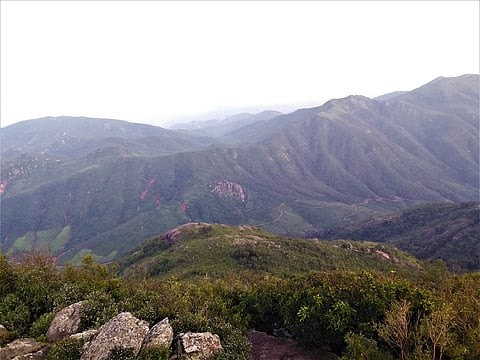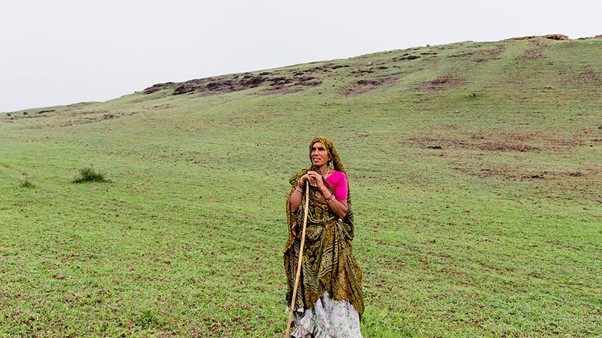Description
Copyright infringement not intended
Picture Courtesy: Down To Earth
Context:
Environmentalists raise concerns over large-scale tourism development in Odisha’s Mahendra Giri hills, a fragile ecosystem declared a Biodiversity Heritage Site in 2022, home to diverse plant and animal species.
Details:
- Location and Geography: Mahendra Giri Hills are situated in Odisha’s Gajapati district, nestled within the Eastern Ghats Mountain range. The hills stand at an elevation of approximately 1,501 meters above sea level and form part of a continuous stretch of hills between the Mahanadi and Godavari rivers.
- Biodiversity Heritage Status: In 2022, Mahendra Giri was officially recognized as a Biodiversity Heritage Site owing to its rich and diverse plant and animal life. The area is renowned for its ecological significance and unique natural environment.
- Flora and Fauna: The region hosts around 1,348 species of plants and 388 species of animals, including numerous species that are endemic or under threat. The vegetation mainly comprises tropical dry and wet deciduous forests.
- Geological Features: The hills consist primarily of granite, charnokite, and khondalite rocks, interspersed with veins of chert, chalcedony, and both crystalline and opaque quartz.
- Tribal Communities: Mahendra Giri is home to indigenous tribal groups such as the Saora (also known as Saura) and Kondh tribes, who have lived in harmony with the forest ecosystem for generations.
- Water Bodies: The Mahendra Tanaya River, a significant watercourse in the area, originates from Mahendra Giri.
- Cultural Importance: The hills attract many pilgrims, primarily due to the presence of historic Panchpandava temples, making the area both ecologically and culturally important.
Impact of Tourism on Mahendra Giri hills:
- Overcrowding of Hill Stations: Tourism has shifted from being seasonal to year-round, resulting in continuous This surge in footfall contributes to soil erosion, trampling of vegetation, and disruption of natural wildlife corridors and habitats.
- Strain on Natural Resources: The high demand for essentials like water, electricity, and food places enormous pressure on fragile mountain ecosystems. Over-extraction of water and overuse of local resources often lead to depletion and imbalance in the natural supply cycle.
- Waste Management Challenges: Increased tourism results in the accumulation of solid waste—especially plastics and non-biodegradable materials—which frequently ends up in rivers, forests, and other natural areas, posing serious risks to both terrestrial and aquatic biodiversity.
- Rising Pollution Levels: The growing number of vehicles and ongoing construction projects contribute to air and noise pollution. This not only disturbs the natural serenity of the hills but also negatively impacts human health and wildlife behaviour.
- Deforestation and Habitat Destruction: Tourism infrastructure—such as hotels, roads, and resorts—often leads to deforestation and fragmentation of habitats. These changes disrupt ecological balance, reduce biodiversity, and threaten the survival of several native species.
International Case Studies in Sustainable Tourism
- Turkey: Community-Based Cultural Tourism: Turkey has adopted a heritage tourism approach that emphasizes both cultural preservation and local participation.
- Costa Rica: A Global Leader in Ecotourism: Costa Rica has successfully linked tourism with environmental and community well-being. Eco-lodges and community-managed forest tours help generate income while preserving natural ecosystems.
- Bhutan: High Value, Low Impact Tourism Model: Bhutan implements a strict policy of controlled tourism to preserve its environment and heritage.
- New Zealand: Indigenous Māori Values in Tourism: New Zealand’s tourism strategy includes traditional Māori environmental ethics.
Measures to Enhance Sustainable Tourism:
- Implement Destination-Based Tourism Planning: Plans should account for carrying capacity, seasonality, and environmental thresholds.
- Integrate Swadesh Darshan 2.0 with NSST:
- Swadesh Darshan 2.0 promotes theme-based tourist circuits.
- National Strategy for Sustainable Tourism (NSST) emphasizes climate resilience, community involvement, and green standards.
- Combining both ensures sustainable tourism development with circuit-level planning tied to national sustainability benchmarks.
- Aligns with India’s Sustainable Development Goals (SDGs) and international commitments like G20 sustainability targets.
- Promote Community-Based and Rural Tourism
- Mandate Green Norms for Tourism Infrastructure: Introduce mandatory eco-certification (e.g., SAATHI, GRIHA) for new hotels, resorts, and tourism facilities.
Conclusion:
To ensure long-term sustainability of India's tourism sector, it is essential to balance ecological preservation with economic development. By integrating community participation, green infrastructure, digital innovation, and robust policy frameworks, India can create a tourism model that protects natural and cultural heritage while supporting livelihoods and enhancing visitor experiences.
Source: Down To Earth
|
Practice Question
Q. Discuss the major challenges posed by unsustainable tourism in ecologically sensitive regions of India. Suggest a multi-pronged strategy to promote sustainable and inclusive tourism in line with national and global environmental goals.
|
Frequently Asked Questions (FAQs)
India is home to diverse ecosystems and cultural heritage. Unsustainable tourism can lead to environmental degradation, cultural erosion, and resource depletion. Sustainable tourism helps conserve these while promoting inclusive development.
Swadesh Darshan 2.0 is a Central Government initiative that promotes theme-based tourism circuits with a focus on sustainable and responsible tourism, infrastructure development, and community engagement.











